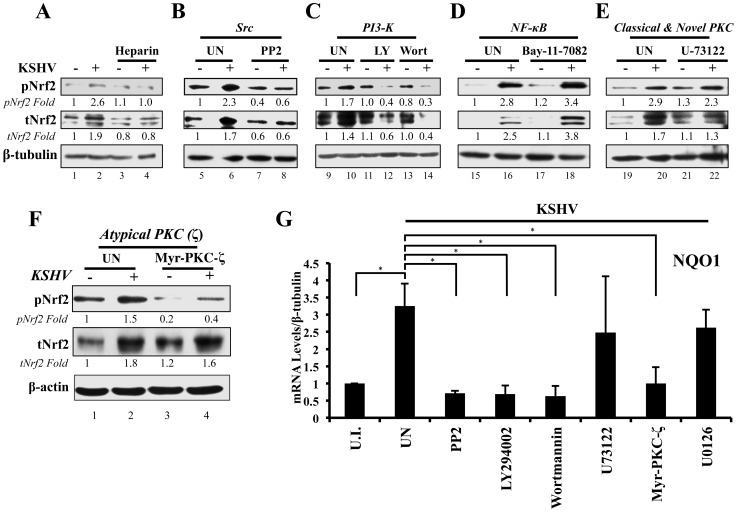Figure 5. Inhibition of virus binding, Src, PI3-K and PKC-ζ and their effect on KSHV-mediated Nrf2 induction.
A) Starved HMVEC-d cells were infected with either functional KSHV (lane 2) or with heparin-treated (20 µg/ml for 1 hr) KSHV (lane 3). Media alone (lane 1) or 20 µg/ml of heparin alone (lane 4) were used to determine if heparin had any effect on Nrf2 activity. B–E) HMVEC-d cells were starved for 8 hr, during which time they were treated with Src inhibitor PP2 (B), PI3-K inhibitors LY294002 (irreversible) and Wortmannin (reversible) (C), NFκB inihibitor Bay-11-7082 (D), PLC-γ inhibitor U-73122 (E), and Myristoylated PKC-ζ pseudosubstrate to inhibit PKC-ζ (consists of amino acids 113–129 of the substrate region) (F). One hour after drug or mock (DMSO) treatment, cells were infected for 30 min with KSHV (20 DNA copies/cell). Protein lysates were immunoblotted for pNrf2 and tNrf2, while β-tubulin/β-actin was used as a loading control. Fold inductions normalized to β-tubulin/β-actin and relative to the uninfected (U.I.) condition (arbitrarily set to 1) are indicated. G) HMVEC-d cells were treated with inhibitors as in panels B–F, infected with KSHV (20 DNA copies/cell) for 4 hr to allow Nrf2-dependent gene transcription to take place, and subjected to real-time RT-PCR for the Nrf2 target gene NQO1 [NAD(P)H quinone oxidase 1]. Bars indicate the fold change compared to the uninfected/untreated condition (arbitrarily set to 1) ± SD for 3 independent replicates. * = p<0.05.

